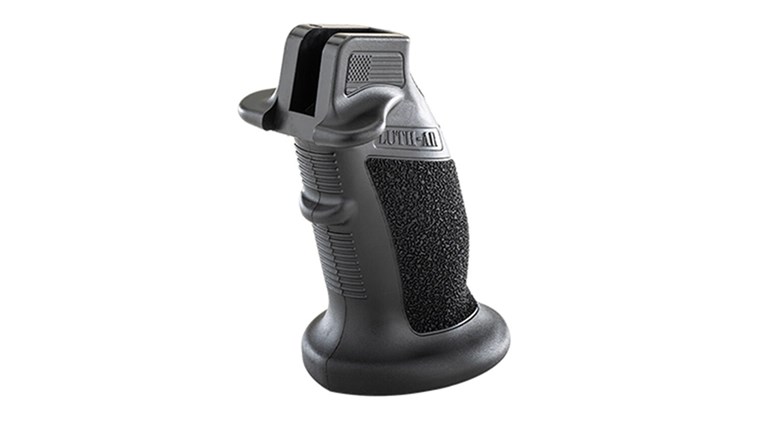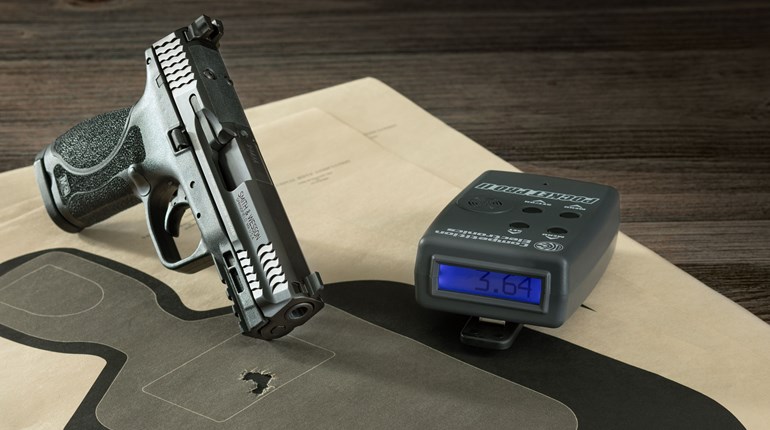
When it comes to personal exercise of our Second Amendment freedoms lately, we’ve certainly nothing of which to complain. First-rate people, outstanding learning opportunities and lots of dented primers have been scattered through the last few months. As we pointed out here, it’s also been a content cornucopia—to say there are lots of ideas is an understatement.
We’re determined to hammer on one of those today, mainly because we find it curiously, pervasively, unhelpfully well-dispersed. Both experienced shooters and comparative beginners struggle with it, varying only in degree.
We describe it simply as a failure to get what we call “high and deep” on the handgun. In general, it’s a poorly understood nuance of good technique, and one that, if fixed, can help almost anyone. Nor is it a comfort-only sort of improvement; the inability or unwillingness to get as high and deep as your handgun and personal “ergonomics” allow makes other improvements harder, even impossible. "Name one," you may say. How about keeping the muzzle flatter in recoil?

Attempting to protect either the web of the hand or the skin atop the second knuckle of the strong side thumb is where the trouble starts. As a measure to prevent the sharp lower left rear corner of the slide from “biting” either as it cycles, shooters reposition their hands lower in precaution; good for peace of mind, but rarely necessary.
This is often and unfortunately reinforced by a sort of comfort factor—the straight-back push of the fingers drives the palm swell of the backstrap into the hollow of the hand. The net result is what appears to be a small gap between the web of the hand and the beavertail, and the desired margin of safety. This seems inconsequential given the comparatively tiny dimension of the gap itself.
In practice, things are generally not so rosy. Without the upward tension on the web of the hand between thumb and forefinger, and into the beavertail from the palm swell via the base of the thumb, the hand will slide. It’s rare for grip tension alone to be strong enough to prevent small, or worse, cumulative changes in grip position (and necessitate a troublesome regrip of the handgun).
Worse is the mechanical advantage that it surrenders. Here, we must get a touch technical: When hand position descends on the grip, what’s called the “moment” of inertia increases around the axis of recoil. Worse yet, it increases at a geometric rate (an exponential factor, in other words). Translation? Even a small gap between the web and the beavertail creates a disproportionate disadvantage in keeping muzzle rise to a minimum as your firearm tries to rotate upward/rearward in recoil.
We suggest this can be curtailed with three expedients, the first almost trivially easy: With an unloaded firearm, satisfy yourself once and for all that the slide isn’t going to bite you. Hold your pistol close to the body, at mid-chest, in your strong hand. Done correctly, the muzzle will point hard left across the body. Be sure you’ve pressed up under the beavertail with sufficient force that the slight fold of skin appears at, or just under, the rear of the beavertail.

Now hand-cycle the slide slowly with the weak hand. The likelihood that there will be any slide and web/knuckle contact is very small. Repeat this several times, changing the angle of view on your hand, the beavertail, and the slide as it reciprocates. Clear is clear, right? On small pistols, it may be a truly tiny fraction of an inch (it is for us), but it’s always clear.
Next, cement this with practice by gripping the pistol from the get-go—holster is best, of course, but whatever—in a way that creates the fold of skin under the beavertail every time. Get in the habit of doing this as one integrated step (slight downward pressure from the middle, ring and pinky fingers on the far side of the pistol will help, by the way). If you’re “finalizing” this as you join the hands in a modern, two-handed grip, that’s OK, but keep in mind you want to be able to get to this (eventually) without that offside adjustment.
Finally, don’t give up the advantage by tilting the pistol too far forward in the act of aiming. It’s natural for a level-with-eyes hand position to reduce the fold in the web of the hand, but the gap should not reappear. Pushing the pistol out too far is a reliable culprit here (as is tilting the head back), but there’s often a temptation to bring the head down to the sights once the benefits of the hand position become clear. Resist all three. Bring the pistol in slightly and keep the neck as straight as you can.
There’s another subtle benefit of “zapping the gap” that you may sense but not understand, and it goes beyond resisting recoil rotation. Being “high and deep” gets more of you on the gun (especially if you must shoot with only one hand), not just from a leverage-resisting prospective, but also from the surface area perspective. While it’d be tough to measure with precision, recoil energy is reduced by perhaps the simplest method of all—the same amount of energy spread out over a larger surface area on your hand(s).
Frank Winn has been studying arms and their relationship to tyranny, meaningful liberty and personal security all his adult life. He has been a firearms safety/shooting instructor for more than 20 years, and earned state, regional and national titles in several competitive disciplines.


































